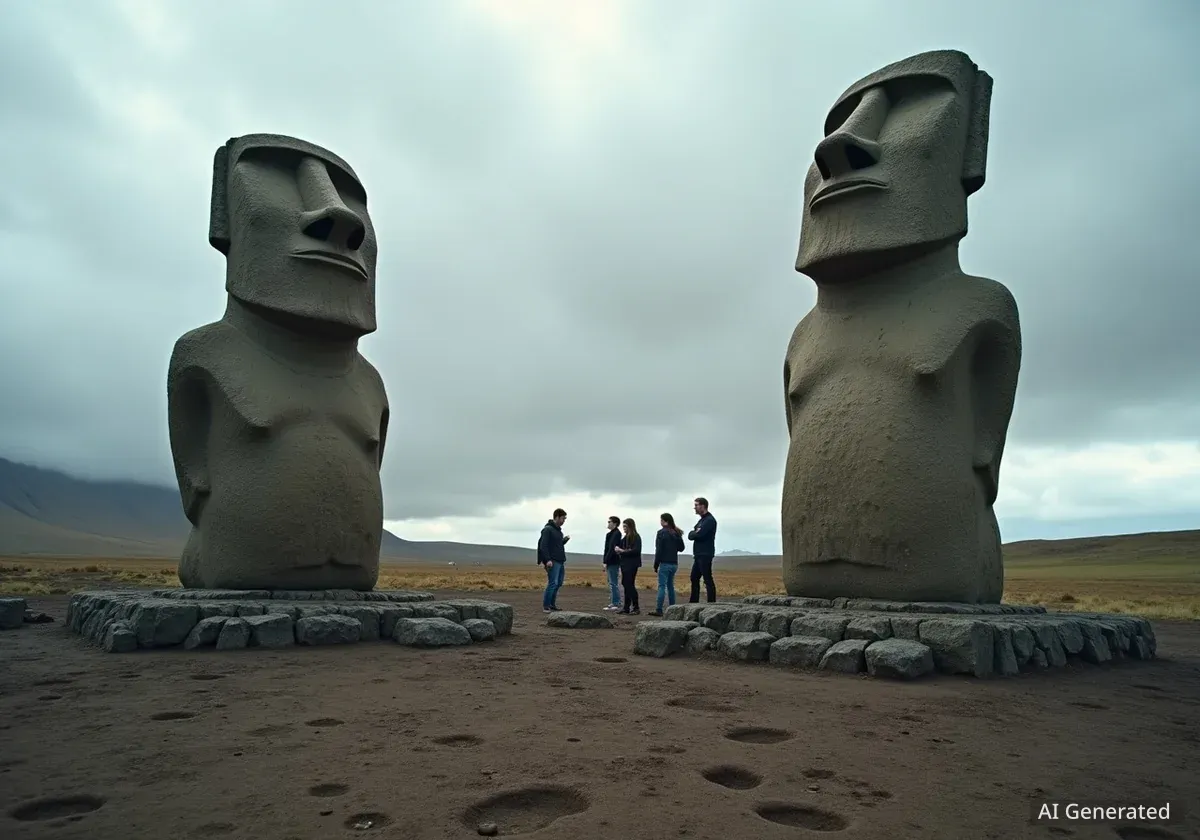An international research team has identified two previously unknown air-filled spaces within the Menkaure Pyramid on Egypt's Giza Plateau. This discovery marks a significant step in understanding the ancient structure without causing any damage.
Key Takeaways
- Two air-filled anomalies detected on the eastern side of Menkaure Pyramid.
- Advanced scanning techniques used included georadar, ultrasound, and electrical resistivity tomography.
- The voids suggest a possible, undiscovered entrance to the pyramid.
Scanning Egypt's Ancient Structure
The ScanPyramids project, a collaboration between researchers from Cairo University and the Technical University of Munich (TUM), made the findings. They focused their efforts on the eastern side of the Menkaure Pyramid. This pyramid, estimated to be about 4,500 years old, is the smallest of the three main pyramids at Giza.
Known entrances to the pyramid are typically on its northern side. These feature highly polished stone blocks. Similar blocks on the eastern facade led researchers to believe another entrance might exist there.
Pyramid Facts
- The Menkaure Pyramid is the smallest of the three main pyramids at Giza.
- It was built approximately 4,500 years ago.
- Its known entrance is on the northern side.
High-Tech Tools Reveal Hidden Spaces
To investigate the eastern side, the team employed a combination of non-invasive technologies. They used georadar, which sends radio waves into the ground to detect subsurface objects. Ultrasound technology helped them map internal structures using sound waves. Additionally, electrical resistivity tomography measured electrical resistance to identify different materials and voids.
By combining data from these three methods, the researchers pinpointed two distinct anomalies. These anomalies are consistent with air-filled spaces within the pyramid's massive stone structure.
"The testing methodology we developed allows very precise conclusions to be drawn about the nature of the pyramid’s interior without damaging the valuable structure," said Christian Grosse of TUM. "The hypothesis of another entrance is very plausible, and our results take us a big step closer to confirming it."
Details of the Discovered Voids
The first anomaly lies approximately four and a half feet (about 1.37 meters) behind the outer facade. It measures about three feet tall (0.91 meters) and five feet wide (1.52 meters). This void suggests a significant hidden space.
The second anomaly is located almost four feet (1.22 meters) behind the outer facade. This space is about three feet tall (0.91 meters) and slightly more than two feet wide (0.61 meters). Both voids are relatively small but could indicate passages or chambers.
Background on ScanPyramids Project
The ScanPyramids project began in 2015. Its goal is to explore the interior of Egypt's pyramids using cutting-edge, non-invasive techniques. Previous work by the project has led to discoveries in other pyramids, including a large void in the Great Pyramid of Giza.
Implications for Future Research
The discovery of these voids provides strong evidence supporting the long-held theory of a potential eastern entrance to the Menkaure Pyramid. The team's non-destructive approach is crucial for preserving these ancient wonders.
Further analysis and possibly more detailed scans will be necessary to fully understand the nature and purpose of these newly found spaces. This research continues to shed light on the construction techniques and hidden secrets of ancient Egyptian civilization.
Researchers hope these findings will lead to a clearer picture of how the Menkaure Pyramid was built and whether it holds more undiscovered secrets within its walls. The project highlights the power of modern technology in unraveling ancient mysteries.
Technology Used
- Georadar: Emits radar pulses to map subsurface structures.
- Ultrasound: Uses sound waves to detect internal features and inconsistencies.
- Electrical Resistivity Tomography: Measures electrical resistance to differentiate materials and identify voids.
The ability to scan these structures without direct intervention is a testament to scientific advancement. It ensures that the pyramids remain untouched while yielding new information.





